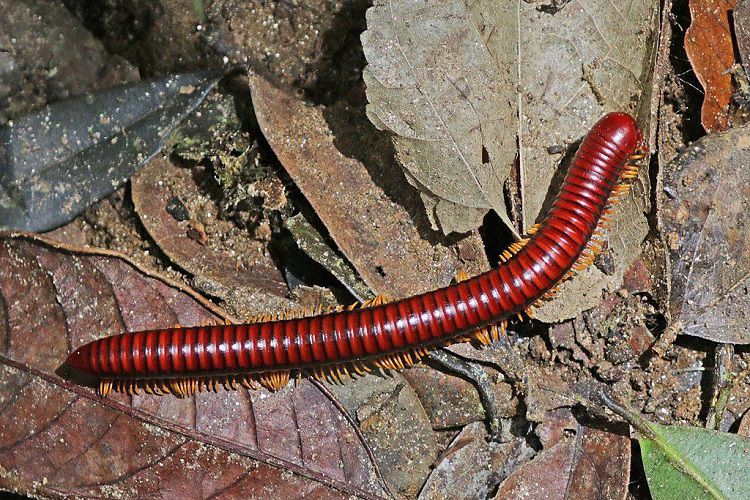Table of Contents
If you have always been fascinated by millipedes, perhaps you are now considering getting one to keep as a pet. That’s great. These wonderful creatures are interesting to watch and make fabulous pets as they are easy to care for and very gentle. If you have recently have purchased a millipede from an exotic pet store or have found one near your home, you will need to ensure you create the perfect environment for your new pet. Here’s how.
Where to House Your Millipede?
When it comes to choosing the perfect home for your millipede, there are a few things to be aware of. The first is that millipedes like to burrow and move about, so the tank should be at the very, very least twice the size of the millipede in every direction. The second is that millipedes are quite strong for their size and stature and they can and will escape if the tank does not have a secure lid.
like to burrow and move about, so the tank should be at the very, very least twice the size of the millipede in every direction. The second is that millipedes are quite strong for their size and stature and they can and will escape if the tank does not have a secure lid.
You can buy a suitable enclosure for your millipede online (click here for a great range on Amazon) or from a local pet store, but you could also make your own if you wanted to. All you will need is a plastic tub with some sort of lockable/securable lid. Remember though to ensure that this lid has some holes in it for ventilation. In terms of size, look for a five-to-ten-gallon tub.
for a great range on Amazon) or from a local pet store, but you could also make your own if you wanted to. All you will need is a plastic tub with some sort of lockable/securable lid. Remember though to ensure that this lid has some holes in it for ventilation. In terms of size, look for a five-to-ten-gallon tub.
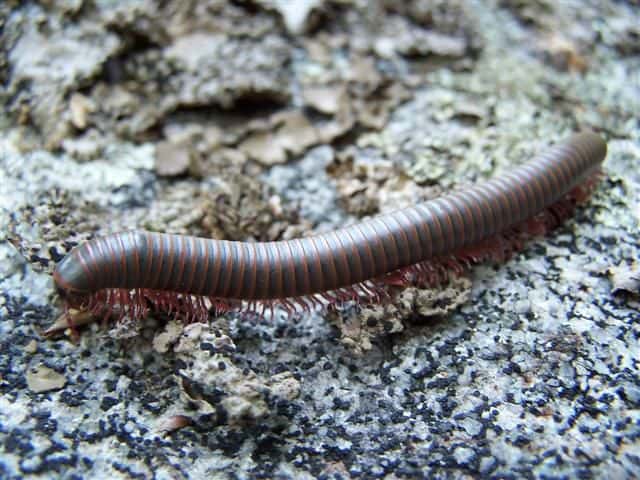
American Giant Millipede 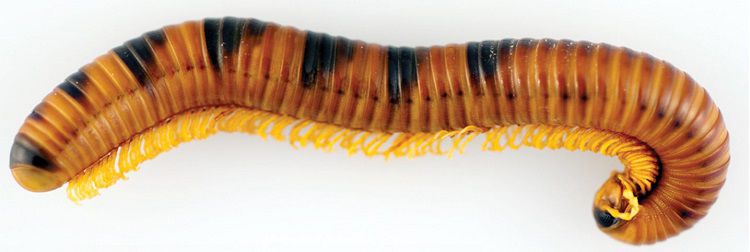
Sagmatostreptus strongylopygus 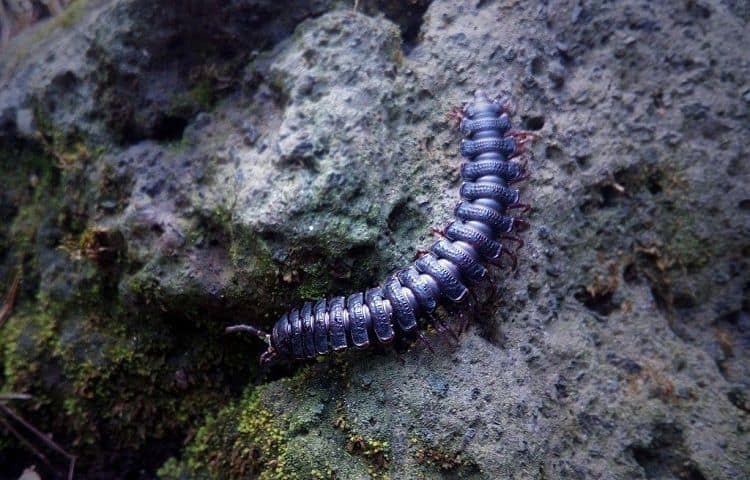
Flat Millipede
As mentioned above, millipedes love to burrow, so the substrate you place at the bottom of the enclosure is an important consideration. Sphagnum moss mixed with bark is a good choice, or you can choose a mix of peat-free compost and dead leaves. Make sure that whatever substrate you do use is damp and deep enough for the millipede to burrow in. As a general rule, the substrate should be at least as deep as the length of your millipede.
Look for some furnishings for the enclosure on which the millipede can crawl into or climb on top of. This could be something as simple as a small pile of pebbles or stones or you could purchase a hollowed-out log online (here on Amazon ) or from a local pet store, through which the millipede can climb. To allow for easier burrowing, place half of the log into the substrate.
) or from a local pet store, through which the millipede can climb. To allow for easier burrowing, place half of the log into the substrate.
What Temperature Should Your Tank be?
The temperature of the tank is another consideration. Room temperature is typically sufficient for most millipedes but if you live somewhere that can become quite cold at night during winter, you may want to consider some artificial heating (a selection on Amazon here ). The temperature of the tank should remain between 60F and 78F at all times.
). The temperature of the tank should remain between 60F and 78F at all times.

Spotted Snake Millipede 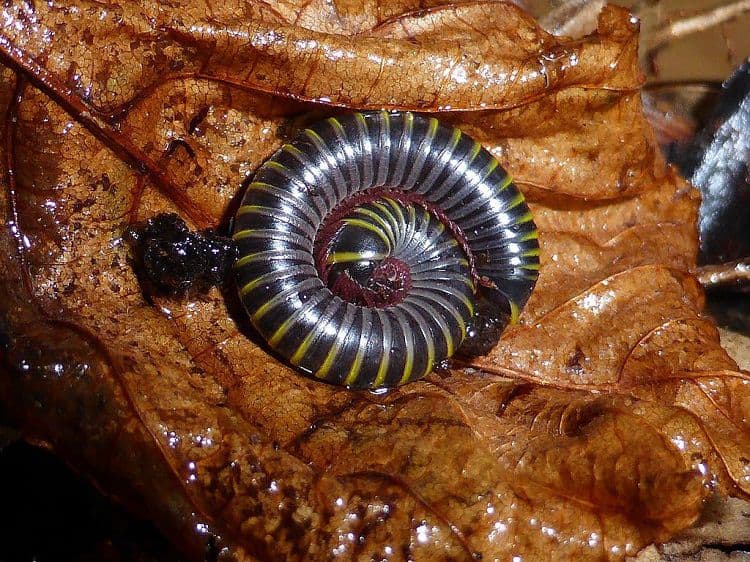
Yellow Banded Millipede 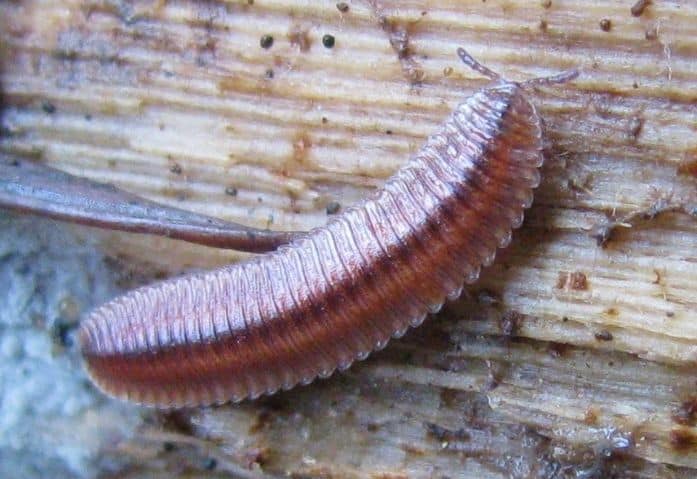
Octoglena bivirgata
If you are worried about the tank becoming too cold, heat pads can be placed under the tank. Alternatively, position the tank in a warm airing closet at night. If you are using any source of artificial heating for your millipede tank, be sure to check the moisture levels of the substrate regularly.
Millipedes require humidity levels of between 75 and 80 percent. To ensure this, spray or mist the tank and substrate regularly. You can also help keep the tank humid by placing wax paper or a plastic bag underneath the lid of the tank. However, be sure to poke some small holes in whatever you use to allow adequate ventilation. This helps prevent the tank becoming too dry.
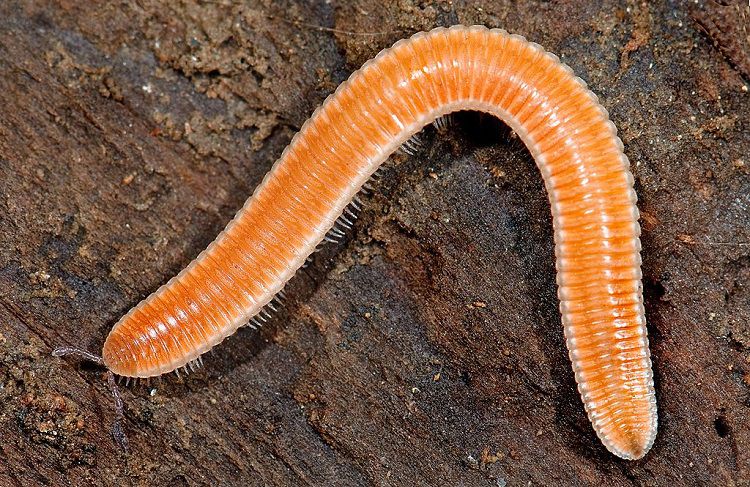
Does Your Tank Require Light?
Millipedes are nocturnal creatures that tend to move about and feed during the night. Therefore, the tank should be placed in an area of your home that is dimly lit and out of direct sunlight. Should you wish to observe the millipede in the evening, invest in a blue or red bulb that will provide some light without disturbing your pet.
Photo Credits:
- Featured Image (Giant Fire Millipede): Charles J Sharp – Sharp Photography
 – This file is licensed under the Creative Commons
– This file is licensed under the Creative Commons Attribution-Share Alike 4.0 International
Attribution-Share Alike 4.0 International license.
license. - Octoglena bivirgata: Sam McNally – https://www.inaturalist.org/photos/275405
 – This file is licensed under the Creative Commons
– This file is licensed under the Creative Commons Attribution-Share Alike 4.0 International
Attribution-Share Alike 4.0 International license.
license. - Yellow-Banded Millipede: Totodu74
 – This file is licensed under the Creative Commons
– This file is licensed under the Creative Commons Attribution-Share Alike 3.0 Unported
Attribution-Share Alike 3.0 Unported license.
license. - Sagmatostreptus strongylopygus: Henrik Enghoff. 2011. Trans-segmental serial colour patterns in millipedes and their developmental interpretation (Diplopoda). International Journal of Myriapodology 6: 1–27, doi:10.3897/ijm.6.1949
 – This file is licensed under the Creative Commons
– This file is licensed under the Creative Commons Attribution 4.0 International
Attribution 4.0 International license.
license. - American Giant Millipede: Randal J. (RJFerret) – This file is licensed under the Creative Commons Attribution-Share Alike 2.5 Generic license.

- Yellow-Spotted Millipede: Franco Folini
 – This file is licensed under the Creative Commons
– This file is licensed under the Creative Commons Attribution-Share Alike 3.0 Unported
Attribution-Share Alike 3.0 Unported license.
license. - Apheloria virginiensis: Bob Walker – This file is licensed under the Creative Commons
 Attribution-Share Alike 4.0 International
Attribution-Share Alike 4.0 International , 3.0 Unported
, 3.0 Unported , 2.5 Generic
, 2.5 Generic , 2.0 Generic
, 2.0 Generic and 1.0 Generic
and 1.0 Generic license.
license. - Spotted Snake Millipede: Whitney Cranshaw – http://www.insectimages.org/browse/detail.cfm?imgnum=5393517
 – This file is licensed under the Creative Commons
– This file is licensed under the Creative Commons Attribution 3.0 Unported
Attribution 3.0 Unported license.
license. - Flat Millipede: Danny Khorskhi – This file is licensed under the Creative Commons
 Attribution-Share Alike 4.0 International
Attribution-Share Alike 4.0 International license.
license. - Millipede: Marshal Hedin
 – This file is licensed under the Creative Commons
– This file is licensed under the Creative Commons Attribution 2.0 Generic
Attribution 2.0 Generic license.
license.

